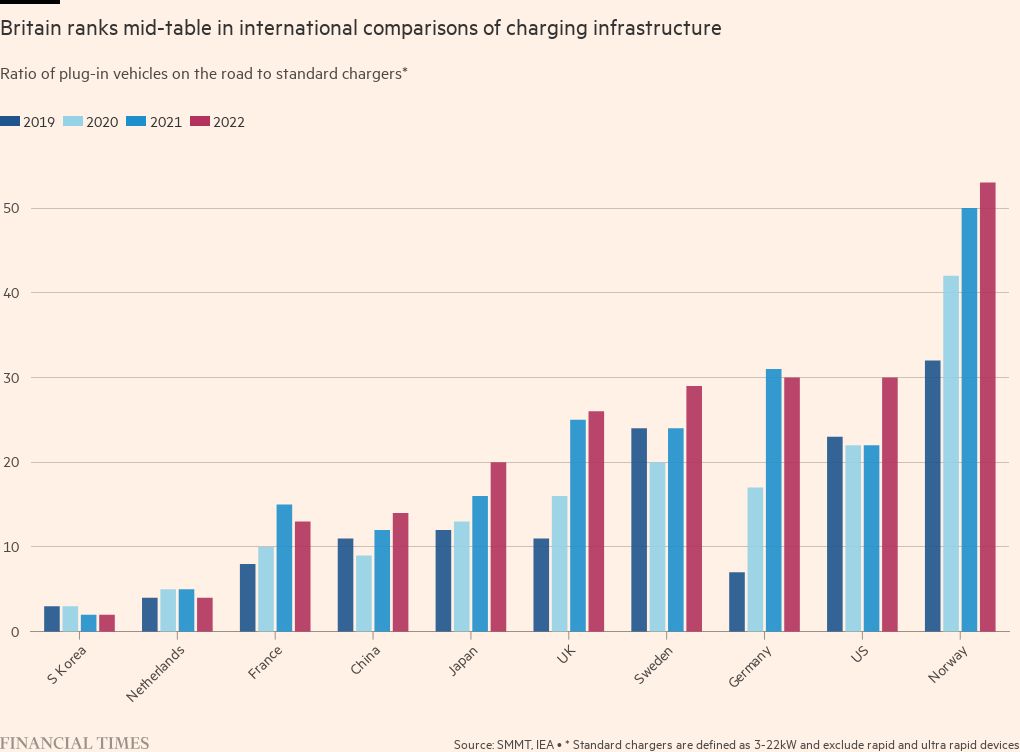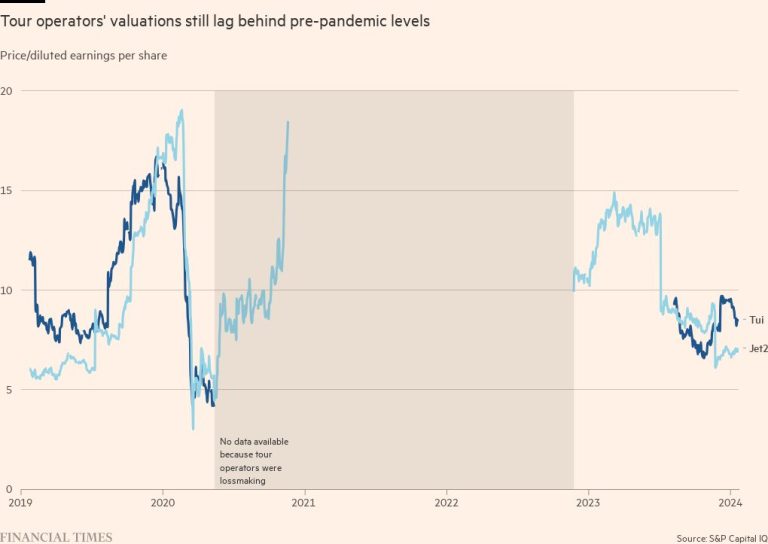Unlock the Editor’s Digest for free
Roula Khalaf, Editor of the FT, selects her favorite stories in this weekly newsletter.
The debate about electric vehicles in the UK comes laced with scare stories about hidden costs, suspect environmental credentials, battery lifetime, combustion and the lack of charging points.
The latter is off-putting for motorists considering making the switch. But the concerns, like most others, are exaggerated.
Carmakers want a rapid increase in public charging facilities to help meet new green targets. Telecoms group BT has declared plans to convert roadside cabinets — traditionally used for cables — into EV chargers.
In total, the UK has nearly 54,000 public charging points compared with 1mn fully electric vehicles, a ratio of just over 18:1. But charging app Zapmap estimates there are also more than 680,000 domestic and work charging points, the locations at which most drivers top up their batteries.
The UK actually ranks mid-table in a group of 10 large economies when comparing the ratio of plug-in vehicles on the road, including hybrids, to standard chargers.
Ratios are imperfect, however, given EVs are a relatively new technology, says Ralph Palmer of campaign group Transport & Environment: it is not yet clear what an EV-dominated UK market would need. These measures also mask the impact of charger speeds. An ultrafast charger at a forecourt would serve more cars in a day than a slow curbside alternative.
UK ministers are aiming for 300,000 public chargers by 2030. Rollout rates are improving. Last year, more than 16,600 points were added, says Zapmap, a year-on-year increase of 45 per cent. If annual additions increased at the same percentage rate, the 300,000 ambition would be surpassed by the end of 2028.
Higher numbers are harder to sustain as markets become more saturated. But there are reasons for optimism. BT is not the only company with ambitions in this area: the oil majors are also rolling out chargers, particularly at forecourts.
Shell is committing $500mn a year in capital expenditure in 2024-25 to expand its EV charging footprint globally, including the UK. Privately owned Osprey, which installed 400 public chargers in the UK between 2018 and the end of 2022, raised its annual rate to 600 in 2023.
The private sector has largely financed the rollout so far. Ministers have, though, agreed a £450mn fund that will allow local authorities to subsidize charging points in underserved areas. Importantly, the “Levi” fund will provide support for local authorities that do not have the resources to draw up charging plans.
Public charging needs to expand to support the EV market. But the cost of EVs, not insufficient charging infrastructure, is the real barrier to adoption.
Lex is the FT’s flagship daily investment column. If you are a subscriber and would like to receive alerts when Lex articles are published, just click the button “Add to myFT”, which appears at the top of this page above the headline













+ There are no comments
Add yours